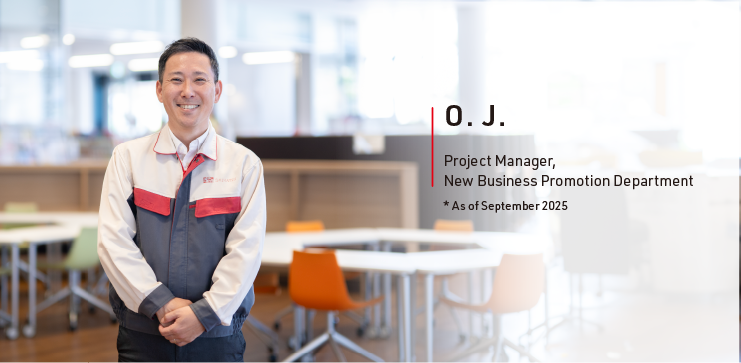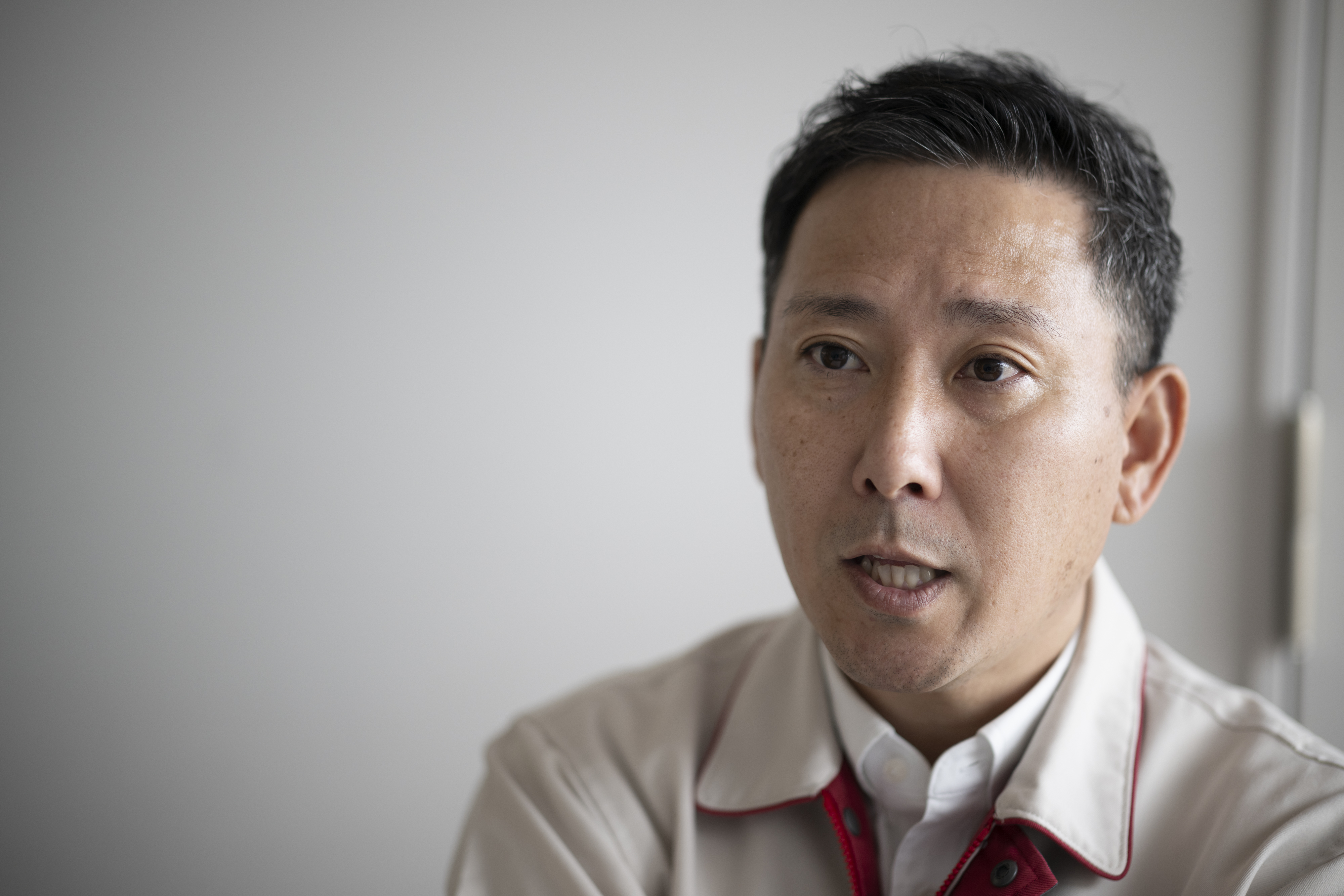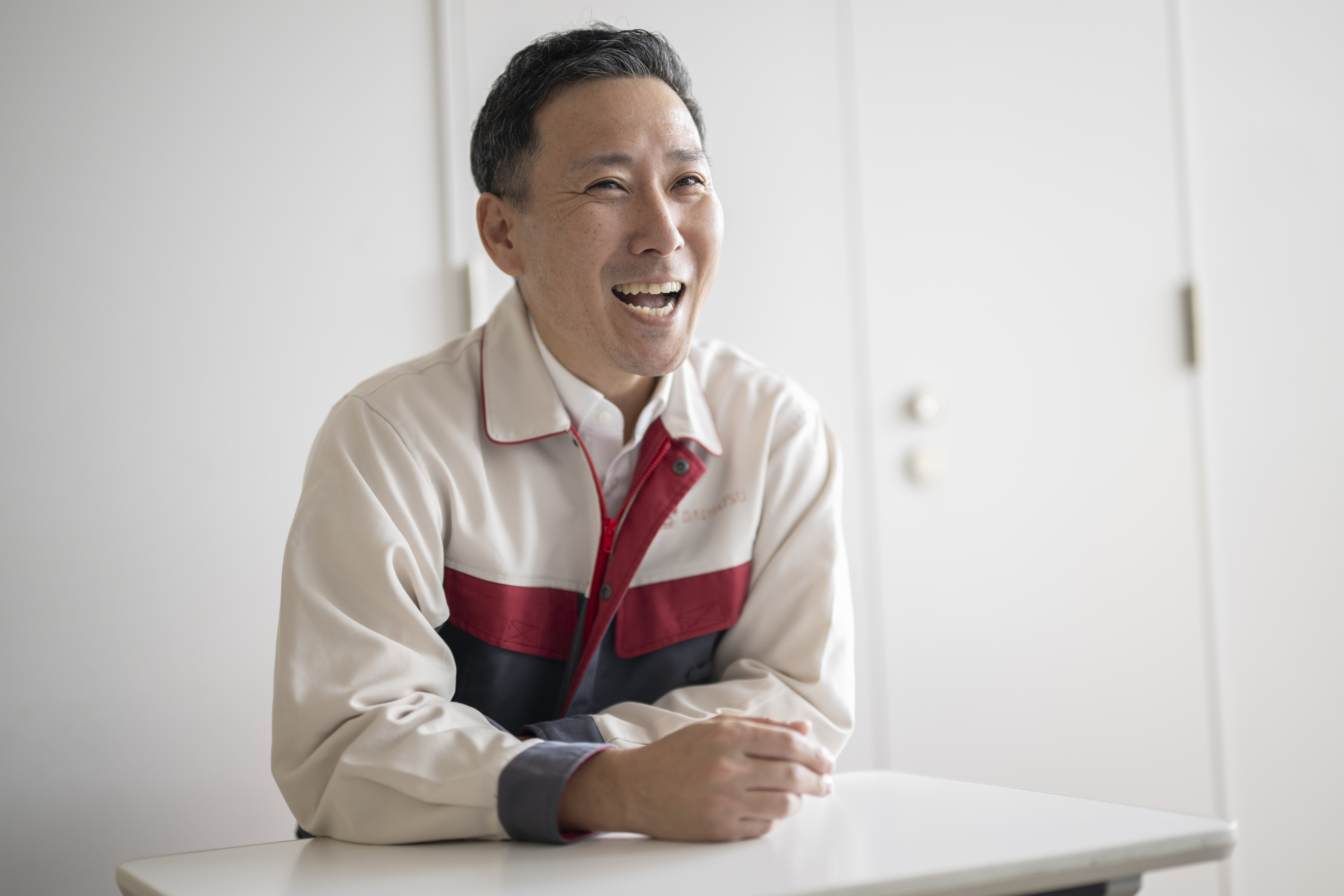KOTODUKURI

Systematically Resolving Transport Problems—Daihatsu’s
KOTODUKURI That Connects Communities and Social Welfare
Daihatsu’s Trailblazing Frontline-rooted New Businesses
New Business Promotion Department initiatives look for value in mobility’s joy and challenges rather than just how to sell cars. I am responsible for the social welfare and nursing care group under that umbrella.
The department consists of around 40 people with four central pillars: social welfare/nursing care, agriculture, community revitalization, and other. Of these, around 20 people work in social welfare/nursing care, so this field accounts for around half of the department’s personnel. Every day, we enter workplaces and think about customers’problems together with them, employing ingenuity while challenging ourselves to achieve substantial change.
Perspectives Shaped by the Frontlines: Entering the Nursing Care Business

I first got involved in this field in 2014. As part of an in-house project to which I belonged to bolster sales in eastern Japan, I was asked, “How do you feel about Kanagawa?” And that was the beginning of my challenging life in Kanagawa. Working in General Affairs as a mid-career at the company, I did not have any experience selling cars, so I was initially flustered when they told me to create a scalable model for selling welfare mini-vehicles. However, I visited many facilities that provide social welfare and nursing care services, discussing various topics with the relevant personnel, and I learned what these customers really need. Rather than demands for the cars themselves, what many of these people told me was that “drop-off/pick–up service is tough to do.” From route planning to time allotment and driver assignment, it is complex and labor-intensive. I also learned that they were spending around 30% of their time on drop-off/pick-up service amid tight labor shortages. When I learned this, I realized that this was not an issue of selling a product; but an indication that the system needed to change. As a car manufacturer, we are focused on mobility. In general, when attempting to increase the productivity of nursing care workers, ideas tend to pertain to making elderly care more efficient or how to conduct in-facility support. We do not have deep expertise in that specific area. That is why I felt the greatest contribution we could make is to figure out how to efficiently transport people to their nursing care facilities. That is also when I saw clearly that we have a genuinely meaningful role to play in this area.
Putting Feedback into Action—
Two Services and How the Daihatsu Style
Is Made
Two services emerged out of this feedback from the frontlines: RAKUPITA SOUGEI and Goissho.
RAKUPITA SOUGEI is a tool that empowers everyone to create digital pick-up and drop-off plans, which were previously handwritten by staff based on their experience and intuition. This business involves a lot of complex, highly-detailed elements, including user status, pick-up and drop-off routes, and time coordination, so the work was highly reliant on the specific intuition and soft skills of certain experienced nursing care personnel. Facilities that have actually implemented RAKUPITA SOUGEI have told us that it successfully reduced reliance on particular individuals who were the only ones that could create pick-up/drop-off time tables.
Goissho is a system that outsources nursing care facilities’ pick-up/drop-off services to an outside party that provides organized transport for multiple facility users per trip, and the time freed up by this system can be used for other tasks at each facility. In addition, the time used for facility pick-up and drop-off can be utilized for secondary purposes. Nursing care professionals should be focused on providing nursing care services to users, but morning and evening transportation (pick-up/drop-off) takes up a lot of their time and effort. It became so burdensome that it gave rise to this service based on the idea of communitysupported transport.
One of our priorities in creating new businesses is an “accelerated loop between hypothesis and experimentation.” This means we form a theory or hypothesis based on feedback from the frontlines, immediately create a prototype, and then return to the frontlines again. This allows us to iterate quickly. There is no division between conceptualizers and workers. Instead, everyone on the team heads out to the frontlines to see things for themselves. I believe that is the most fitting way for Daihatsu to do it, and honestly, it is the most interesting as well.
Expanding Value Through Technology and Community Collaboration

We use AI to optimize drop-off and pick-up plans. The conditions can be very complex, including multiple facilities in different locations and desired arrival times, different pick-up times for multiple users, and narrow roads that require mini-vehicles to navigate. Our system allows users to create efficient routes even under these conditions.
The essential requirements for the system are created through close collaboration between the on-the-ground team that is deeply involved on site and the systems team. Three members of the social welfare and nursing care group are the core drivers of this. We have revised this system again and again, insisting on something that is truly useful in the field, not merely functional. We have also worked on page composition and operational flow to ensure the service is easy to use for nursing personnel who may not have a high level of IT literacy.
We also prioritize making adjustments to suit the specific circumstances of each community and region. Although there are communities for which taxi companies clearly pledge to cover transport needs, there are others where we are asked to take on everything pertaining to nursingrelated transport due to lack of drivers. There is really a lot of variation. That is why our service does not insist on a single one-size-fits-all approach. We provide a flexible model, and the question of who will fulfill what role is something that is decided through discussion with the community. That stance is consistent and important to us, and I think our flexibility is ultimately the reason for our success.
Future Outlook and Addressing Social Issues
There are three themes that we hope to tackle in the future.
The first is how nursing care facility vehicles can best make use of their free time during the day. There are said to be roughly 200,000 to 400,000 nursing care facility pick-up/drop-off vehicles throughout Japan, but they see only limited use during the middle of the day. We are looking at ways to make use of this as a community mobility resource.
The second is the minimization of accidents during transport. Nursing care staff take care of transport in the mornings and evenings, but day is mostly taken up by tiring care work, so the risk of driving while tired is high. So optimizing transport management can also directly increase safety.
The third is regional optimization using pick-up/drop-off data. We hope to use information such as who is frequenting what facility and when to maintain and improve social welfare infrastructure for the community as a whole, in collaboration with local governments.
These efforts may not be in a flashy business, but we are committed to tackling people’s problems, no matter how small, and taking them seriously so that we can resolve them systematically. I believe that simply working diligently on this is important in itself. More than anything, we know that these services are absolutely essential in Japanese society, where every year there are more senior citizens and fewer workers.
I hope that young people also see this and take interest in Daihatsu’s activities. Working at Daihatsu gives you the chance to turn your ideas into reality, while knowing that you are playing a useful role in society.